German Shepherds with dwarfism are often put to sleep, due to the fact that their lifespan is predicted to only be five years and often times they develop severe anxiety and other health issues. Thank goodness that the breeders of Tiger decided to find a loving home for the little guy, instead!
I first met John Coleman on my way home from work. He was standing outside Sydney's Erskineville train station with two German Shepherds: a large adult with a shiny chestnut coat and a much smaller creature with huge triangular ears and fluffy hair. “Oh my goodness,” I squealed, as I walked towards the dogs. “How old is your puppy?” John smiled and sighed slightly, and pulled the dogs' leashes back towards his body. “I wouldn't pat him,” he replied. “He's not a puppy. He's three years old and he has dwarfism.”
Pituitary dwarfism affects dogs in much the same way as humans. It's a genetic disorder predominately found in purebred German Shepherds that reduces the production of growth hormones. This means the dogs stop growing at an early age, and live out their time as almost entirely proportionate bonsai. The result is undeniably adorable and puppy-like, although up close the dwarves don't really look like infant German Shepherds-more like a Corgi crossed with a raccoon.
Cuteness aside, German Shepherd dwarves come with various health issues. They face infertility, a shortened life span, and problems with growing skin, teeth and adult fur.
“There was no indication at birth that anything was wrong, but I was suspicious after a few weeks,” said Darien to VICE. By the time she took her litter to be microchipped at 10 weeks, the dwarfism was obvious. “Three puppies were normal and three were tiny.
And so the Northcotes kept the three puppies, even though they were totally unexpected. “We've been breeding since 1989, and never anticipated we'd get a dwarf,” says Darien. That's because pituitary dwarfism is a recessive genetic disorder-both parents have to be DNA ‘carriers' to result in affected offspring.
After they got over the initial shock, the Northcotes approached their old friends – the Colemans – with an unusual playmate for their female German Shepherd, Lydia.As the months progressed, the Coleman's new family member slowly gained weight and even grew a half-decent amount of puppy fur.
John says they've learned to protect people from Tiger, especially on the two dogs' daily walks around Erskineville. He's now become a bit of a local celebrity.
Tiger is now approaching his fourth birthday. German Shepherd dwarves aren't expected to live past five, although the Colemans reckon he'll live a bit longer. “It will definitely affect us when he goes,” says John. “At home with us, Tiger is the most affectionate and playful creature you could imagine. He's a perpetual puppy.”With any luck, Tiger will celebrate a few more joint birthdays in the park with his two dwarf siblings. They're still with the Northcotes, who named them Rocky and Arnie.
We hope that Tiger lives a long life and we have no doubt that he will simply because is blessed with a wonderful family, fun auntie Lydia, and people who love him. You can read more about Tiger's story on Vice. Just because a dog has dwarfism does not mean he can't have a fulfilling life.
These types of dogs deserve all the love in the world and who knows, by giving them a fulfilling life they just may touch your heart tenfold in return.

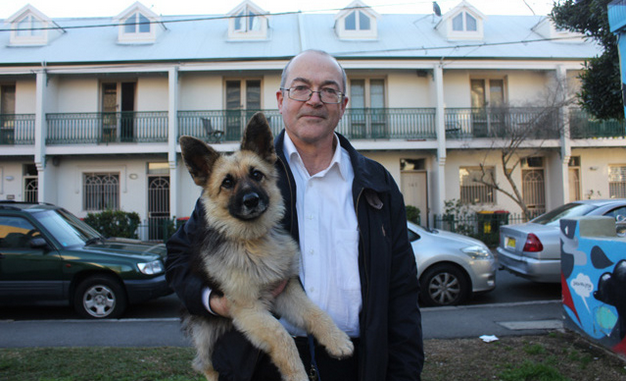
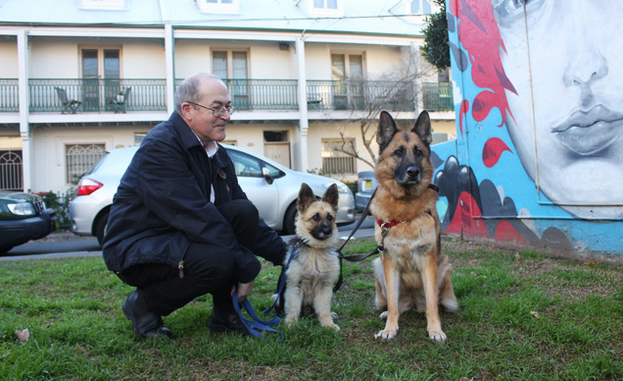



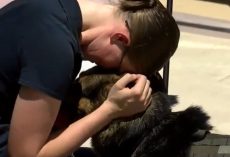


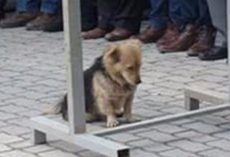
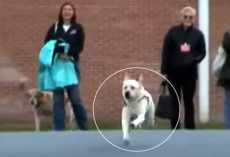
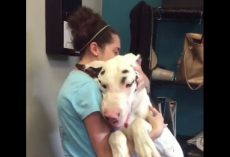

Marcus Roberts
- Edit
@[669721864:2048:Katelyn]
Elizabeth Ford
- Edit
@[1793703148:2048:Thomas Basile]
Micayla Knowles
- Edit
@[100000629277687:2048:Zach Williams]
Breanna Folk
- Edit
@[100001456298710:2048:Jonathan Hernandez]
Justine Dickey
- Edit
@[1335321820:2048:Jamie $#%&!@*ey] @[100000652215106:2048:Ian Gyetvai]
Kelly Shumway
- Edit
@[9005132:2048:Lindsay Nelson] I neeedddd this dog!!!
Kodi Shepherd
- Edit
It’s soooo adorable!!!
Kitty Ichimaura
- Edit
I want to cradle it like a baby soon bad
Kodi Shepherd
- Edit
Yes!!!
Faye Bohannon
- Edit
I will take two to go, please!
Tracy Travis Mayes
- Edit
@[100004941517000:2048:Melissa]
Helen Horn
- Edit
My goodness, how cute is he! I would take him home with me.
Christina Marie
- Edit
@[706001346:2048:Gina Rabe]
Gina Rabe
- Edit
Omg I want one!
Christina Marie
- Edit
It kinda looks like alf if you look at its face
Mia Williams
- Edit
I DO love him!
Sharon Biel
- Edit
I definitely would too!!!
Shawn McCormick
- Edit
@[1546248760:2048:Shanna McCormick]
Sariah Williams
- Edit
He probably didn’t realise he wasn’t big like them.
Kathryn Brundige
- Edit
@[15110367:2048:Lauren Brundige], I think I found your perfect dog.
Elaine Maria
- Edit
@[100000739413653:2048:Nancy Marie]
Nancy Marie
- Edit
Oh holy heaven.
Brandi Perry
- Edit
@[1038822527:2048:Elliott Perry] can this be true?!?!
Melinda Roberts Carpenter
- Edit
@[100002655053091:2048:Sherry Kirkland]
Sherry Kirkland
- Edit
So cute!!!
Emily Totten
- Edit
I want him
Angelica Medrano Leiter
- Edit
@[563014094:2048:Eric Leiter] perfect u want a gsd and I want a small pup
Linda Robinson Earles
- Edit
Omg I could love him to pieces
Kaylee Steffner
- Edit
@[100002171469915:2048:Morgan Johnson] @[737280504:2048:Jennifer Parker Johnson]
Mayllyn Luz
- Edit
@[1529400157:2048:Nicole Wawarosky] how adorable is he?!
Nicole Wawarosky
- Edit
I’ll take 10!
Olivia Pyles
- Edit
@[100001307068132:2048:Michael Pyles] @[1003480848:2048:Nikki Mayhew]
Courtney Jones
- Edit
@[100001277963157:2048:Jen Vaccaro Salzwimmer]
Jen Vaccaro Salzwimmer
- Edit
Omg! I read this story over the weekend. He’s adorable even though he’s cranky. Thanks for tagging me!
Tina Smith-Cl
- Edit
OMG . ❤️